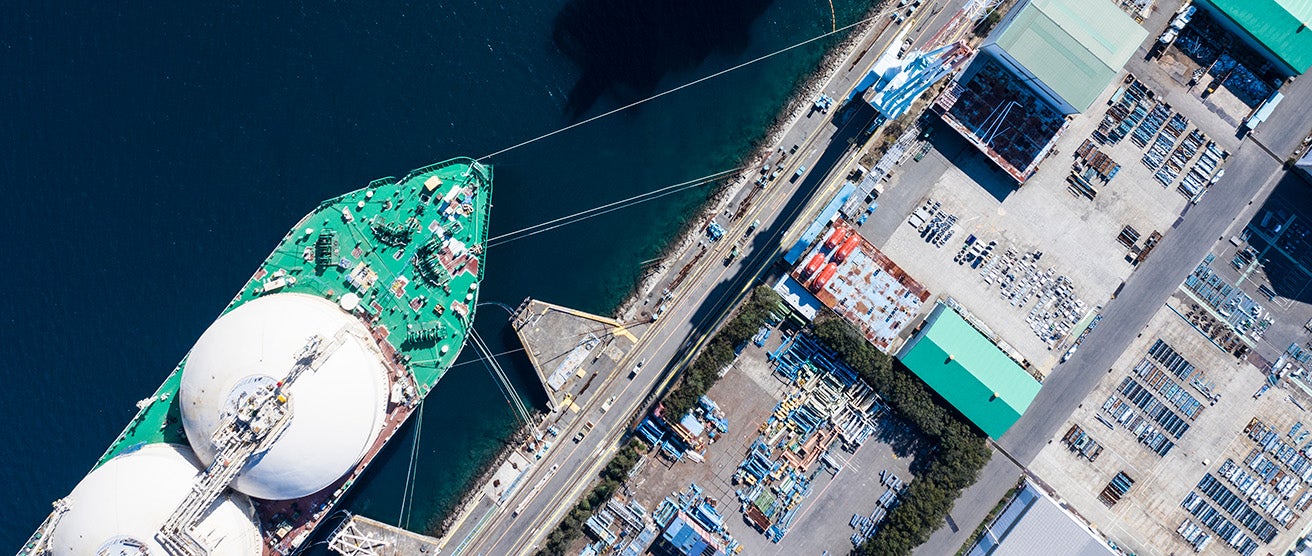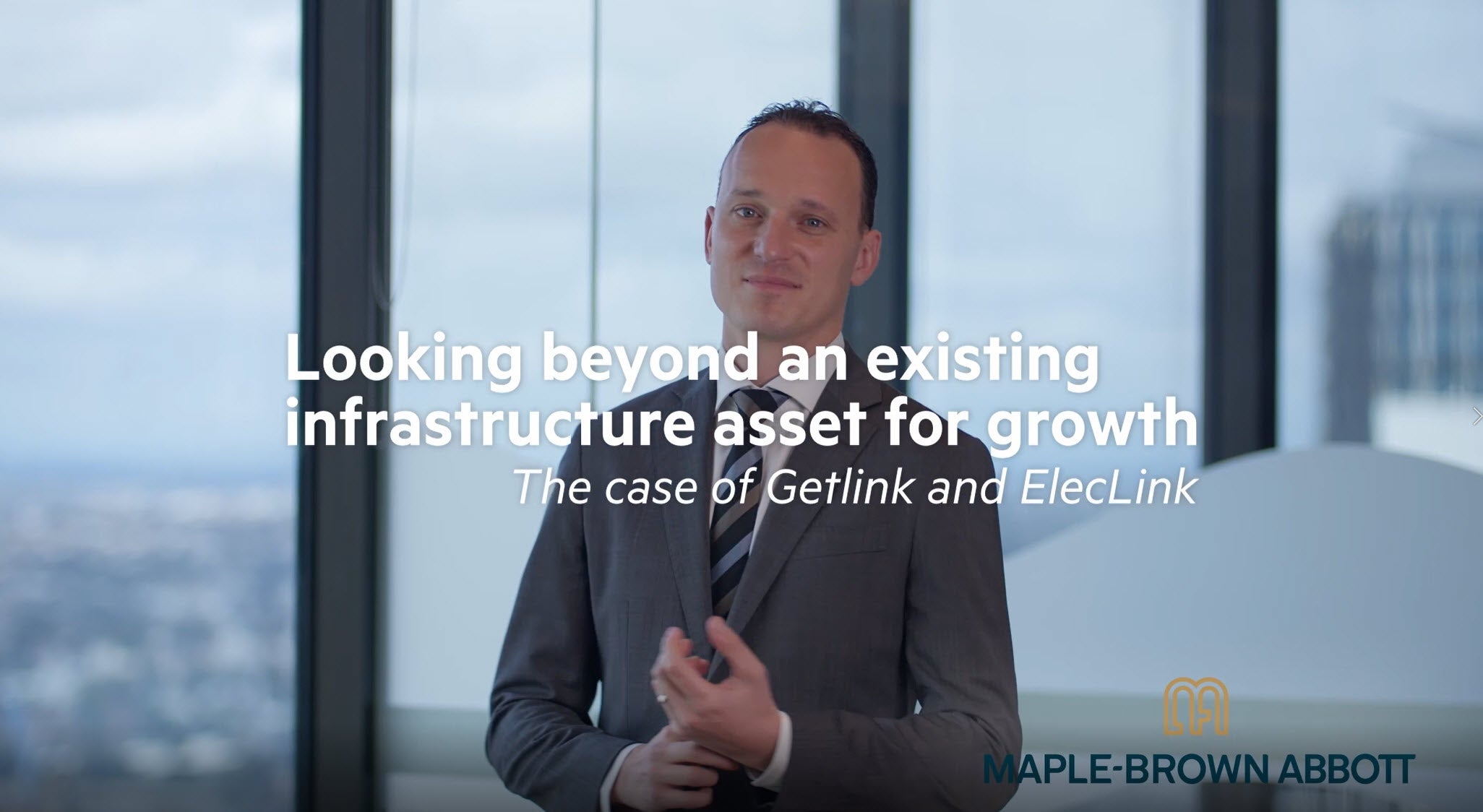
Global listed infrastructure performed true to label in 2022, which was a tumultuous year for asset markets. The sector lagged global equities over 2020 and 2021, missing out on a lot of the froth that formed in some asset markets. For the year ending 31 December 2022, listed infrastructure outperformed global equities, with the FTSE Global Core Infrastructure 50/50 Index (AUD) returning 2.0%.* Global equities as measured by the MSCI World returned -12.6% in AUD terms. The inflation protection that tends to be embedded in many infrastructure assets helped soften the increase in interest rates, and we believe the generally defensive exposure driven by the essential service nature of infrastructure helped returns.
But what about 2023? Asset markets remain volatile, but there are signs already of what might be coming.
There are early signs that inflation recently peaked and real interest rates have come off their recent highs. This means the market believes central bank actions will ultimately be successful, even if inflation looks like it will remain stubbornly high compared to the past decade. In our view, the inflation protection in many infrastructure assets, such as toll roads that can pass inflation on via toll rates to motorists or regulated utility networks that have their asset base increased by inflation each year, should be protected from further increases in inflation.
Ultimately, we think the best returns on a risk-adjusted basis are generated in the listed infrastructure assets class through stock picking with a focus on valuation, inflation protection, low cashflow volatility and strong environmental, social and governance (ESG) credentials. Overlaying this, there is a shortage of infrastructure globally that is needed to improve living standards and the environment. Large amounts of capital need to be invested over coming decades by both private infrastructure owners and government. We believe the key opportunities are in listed infrastructure companies that play a role in themes such as the energy transition, electrification of society, transport mobility and digitalisation. We are seeing opportunities in renewable energy developers such as UK listed SSE plc, which owns regulated electric networks in Scotland along with the largest offshore wind asset portfolio in the UK. A very large opportunity exists in the ‘great re-wiring’ of the electric grid to support the energy transition to renewables. Toll roads and telecommunication tower networks presently offer good valuation opportunities in our view for assets that are necessary for the proper functioning of a modern society and also have resilience in earnings should the world face recessionary conditions in 2023, which is a view held by many market economists.
Opportunities in toll roads and telecommunication assets
Both toll roads and telecommunication assets are trading at significant discounts to our valuations after some weakness over 2022. Interestingly, we have not seen a corresponding softening of values for these assets in the direct infrastructure market, reflecting a divergence between the markets. This divergence has driven a couple of takeovers in our portfolio holdings in these sectors over 2022, so that might be a repeating theme should the gap between listed and direct infrastructure be maintained.
When we look at risks, the main one for the listed infrastructure sector is rising real interest rates, which impacts the discount rate of all risk assets, but perhaps more so infrastructure due to the long duration cashflow profile. US 10-year real rates have moved up from an unsustainably low level of around -1.0% at the start of 2022 to around 1.6% as at 31 December 2022. Global economic weakness in 2023 should keep a lid on this risk over the next 12 months, but we remain watchful and aware of each individual company’s sensitivity to this risk.
Continuing global energy crisis
It looks like the global energy crisis is here to stay with the Russian war in Ukraine looking protracted. We avoid investing in companies with material direct exposure to commodity prices, however we see benefits for renewable energy developers in Europe and the UK who are accelerating their roll-out of new renewable generation under long-term contracts.
Governments and regulators are supportive of reducing reliance on Russian gas. Meanwhile in the USA, the Inflation Reduction Act (IRA) signed into law by US President Joe Biden in August 2022 provides certainty for tax credits available to renewable developers and other asset builders who are enabling the decarbonisation of the USA. The IRA will underpin years of investment necessary to decarbonise the US energy system. Also in the US, the tight global liquified natural gas (LNG) markets are proving lucrative to LNG export infrastructure.
Mitigating political intervention risk
In the infrastructure sector, there is the ever-present risk of political intervention, and this is heightened by various bill pressures that we are seeing globally due to higher energy prices and inflation. We keep a close eye on this risk, and it is the reason we prefer regulatory regimes that have a reliable track record and are operationally independent from government like the situation in the UK and the UK’s water regulator OFWAT.
* Past performance is not a reliable indicator of future performance
Disclaimer
This material was prepared by Maple-Brown Abbott Ltd ABN 73 001 208 564, Australian Financial Service Licence No. 237296 (MBA). This information is provided for information purposes only. This material does not constitute investment advice or an investment recommendation of any kind and should not be relied upon as such. This information is general information only and it does not have regard to any investor’s investment objectives, financial situation or needs. Before making any investment decision, you should seek independent investment, legal, tax, accounting or other professional advice as appropriate. This material does not constitute an offer or solicitation by anyone in any jurisdiction.
This material is not an advertisement and is not directed at any person in any jurisdiction where the publication or availability of the information is prohibited or restricted by law. Past performance is not a reliable indicator of future performance. Any comments about investments are not a recommendation to buy, sell or hold. Any views expressed on individual stocks or other investments, or any forecasts or estimates, are point in time views and may be based on certain assumptions and qualifications not set out in part or in full in this information. The views and opinions contained herein are those of the authors as at the date of publication and are subject to change due to market and other conditions. Such views and opinions may not necessarily represent those expressed or reflected in other MBA communications, strategies or funds. Information derived from sources is believed to be accurate, however such information has not been independently verified and may be subject to assumptions and qualifications compiled by the relevant source and this material does not purport to provide a complete description of all or any such assumptions and qualifications. To the extent permitted by law, neither MBA, nor any of its related parties, directors or employees, make any representation or warranty as to the accuracy, completeness, reasonableness or reliability of the information contained herein, or accept liability or responsibility for any losses, whether direct, indirect or consequential, relating to, or arising from, the use or reliance on any part of this material. This information is current as at 31 December 2022 and is subject to change at any time without notice.
© 2023 Maple-Brown Abbott Limited.







